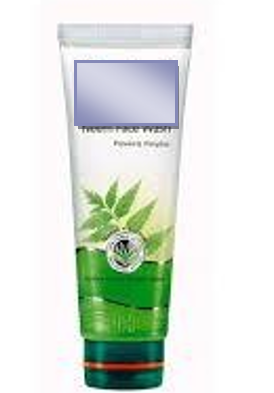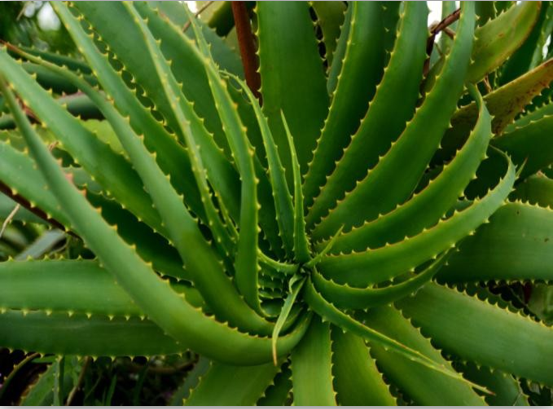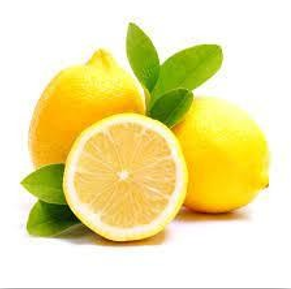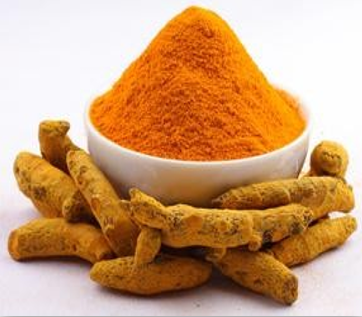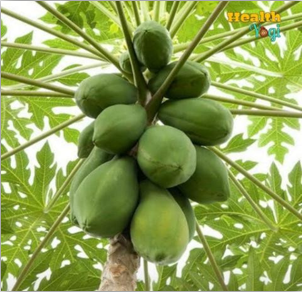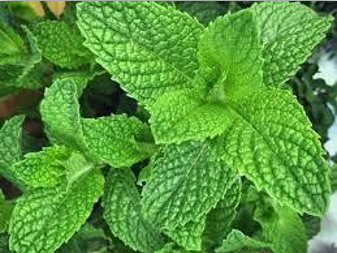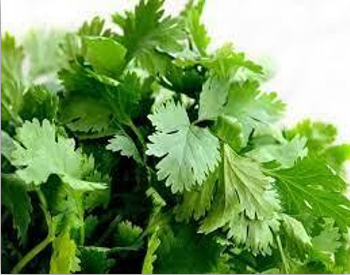Introduction
The items that are used to wash your face without drying it out are called face washes. The term "cleanser" is another prevalent name for it. It has been discovered that this product is suitable for all skin types.1, 2 A cleanser removes dirt, makeup, and extra oil from your face. These contaminants are oil soluble. A facial wash can also be used to get rid of them, but its effectiveness might not be 100%. Ordinary soaps might cause facial skin to dry out because it is so fragile. A face wash is a gentle cleanser that effectively moisturises the horny layer of the skin without causing any harm to the skin and performs the essential task of keeping skin clean, sterile, smooth, and fresh. So that the skin seems vibrant and youthful.3, 4, 5, 6
A face wash is a facial care solution used to clean the skin on the face of makeup, dead skin cells, oil, grime, and other forms of pollutants. This aids in pore cleaning and shields the skin from conditions like acne. A cleanser, toner, and moisturiser can all be used as part of a skin care routine.
Skin care preparation for face:7
The skin being largest organ of the body, accounts about 15% of the total adult body weight. It performs many vital functions including protection against external physical, chemical and biologic assailants as well as prevention of excess water loss from the body and a role in thermoregulation.6 Acne develops more in females than in males, which shows the earlier onset of puberty in females and the severity of the diseases vary depending on the various factors. It is a chronic inflammatory disorder of the pilosebaceous units. Typical lesions of acne include comedone, inflammatory papules and pastules. Nodules and cysts scarring & psychological distress. Comedonal acne is non inflammatory and divided into 2 types a) whiteheads and b) blackheads, white heads (closed comedo) present as fresh or white colored, raised bumps whereas blackheads (open comedo) present as open pores containing dark colored skin roughage consisting of melanin, sebum and follicular cells.4
Advantages of face wash 7
It helps to remove dead skin cells that helps new skin cells replace old one.
It helps to keep skin fresh and healthy.
It makes the skin to look radiant.
The mixture of dead skin cells and excessive oil clog pores, which can lead to acne white heads, blackheads and total weary appearance. Exfoliating the pores regularly, avoids all the above skin problems.
Removing dead skin cells that means your skin will develop wrinkles at a slower pace.
"Face washes may be used to impart cleansing, anti-wrinkle, anti-acne, moisturising, and skin fairness properties. Skin lightening substances are thought to work by preventing the development of melanin in melanocytes, therefore reducing the amount of melanin, on the metabolism and production of melanin in the skin. Due to their low toxicity to melanocytes, ingredients that suppress the development of melanin, such as propanediol, evodia rutaecarpa fruit extract, arbutin, kojic acid, and vitamin C and its derivatives, are used in whitening cosmetics.2
They are thought to function in at least four different ways, including restoring normalcy, increasing sebum production into pores to prevent obstruction, eliminating the propionibacterium acnes bacteria, having anti-inflammatory properties, and affecting hormone levels. Because of the numerous negative impacts that using synthetic medications has on one's health, natural materials are increasingly being used in product composition. Although marigold, licorice, and orange peel are among the most potent antioxidants and free radical scavengers, they also have a very favourable effect on acne thanks to their anti-microbial, anti-inflammatory, and anti-oxidant properties. Benzoyl peroxide, antibiotics (topically or orally), retinoids, antiseborrheic drugs, anti-androgen drugs, hormonal therapies, salicylic acid, alpha hydroxyl, azelaic, nicotinamide, and keratolytic soaps are some of the remedies for acne.4
Table 1
Literature review
|
Sr. No. |
Title |
Author |
Year |
Finding |
|
1. |
General review on herbal cosmetics. |
A. Fathima, Sujith Varma, et al. |
2011 |
The bioactive ingredients from botanicals include vitamins, antioxidants, various oils, essential oils, dyes, tannins, alkaloids, carbohydrates, proteins and terpenoids etc which serve as cosmetics for care of body and its parts. The herbal cosmetics manufactured and used commonly for daily purpose include herbal face wash. 3 |
|
2. |
Anti-acne synergistic herbal face wash-Formulation, evaluation and stability studies. |
Harsharan Pal Singh, et al. |
2015 |
The Aim of this study was to formulate and evaluate the herbal face wash containing extracts of Azadirachta indica (Neem), Curcuma longa (Haldi), Coriandrum sativum (Dhaniya), Aloe berbadandis (Aloe Vera), Citrus limon (Lemon) and Mentha (Pudina) distillate using Carbomer Ultrez 20. 6 |
|
3. |
Preparation and evaluation of marigold,liquorice and corange peel extract containing herbal face wash. |
Vaibhav Wagh, et al. |
2015 |
The present work deals with preparation and evaluation of herbal anti acne face wash containing hydro alcoholic extract of marigold (calendula officinalis, Asteraceae), liquorice (Glycerrhiza glabra, leguminosae), Orange peel (Citrus X sinensis, Rutaceae). The plant has been reported in the literature having good antimicrobial, anti- inflammatory, and anti- hyperpigmentative activity. 4 |
|
4. |
Formulation and evaluation of herbal face wash |
Sachin Bhagwat Aglawe, et al. |
2018 |
The objective this work is to formulate and evaluate an herbal face pack for cosmetic purpose from herbal ingredients like multani mitti, turmeric, aloe vera, sandalwood, lemon peel, rose petal powder, manjistha, lodhra and gram flour. 6 |
|
5. |
Formulation, phytochemical, physical, biological evalution of polyherbal face wash |
Vani Mamillapalli1,et al. |
2020 |
The present study aims at formulation of polyherbal vanishing cream and face wash, determination of total flavonoid content of herbs used, evaluation of formulations for various physical parameters followed by antibacterial and antifungal activities. 8 |
|
6. |
Novel herbs used in cosmetics for face wash. |
Arashmeet Kaur, et al. |
2020 |
The Concept for the utilization of novel herbal plant ingredients in various formulations such as hair tonic, face wash. 9 |
|
7. |
Clinical study to assess efficacy and safety of purifying neem face wash in prevention and reduction of acne in healthy adults 10 |
H Rajaiah Yogesh,et al. |
2021 |
To evaluate the safety and efficacy of Purifying Neem Face Wash (PNFW), an herbal skincare product in the prevention and/or reduction of mild-to-moderate acne. 11 |
|
8. |
A comprehensive review on skincare cosmeceuticals 12 |
Krishna Dev, et al. |
2022 |
Skin care cosmeceuticals such as facewash, moisturizers, mask, sunscreen, exfoliaters etc. are meant for modify, beatify and treat skin imperfactions. These preparations have both therapeutic and cosmetic effects. Amongst, face wash is frequently used preparation that eliminates dirt and oil without drying out the face hence known as cleanser. 13 |
Forms of face wash 14
Types of Face Wash
In general, a face wash is suitable for all skin types; however, there are now a variety of products on the market that are formulated to suit various skin types. For instance, an oily skin face wash is designed for people with oily skin conditions; it does not contain oils and instead leaves a thin film of oil on the skin. There are numerous varieties of face washes on the market, including ones for oily, dry, and regular skin. 14
Features of face wash: 14
Herbs Used in Face Wash
An indigenous tree that is grown almost everywhere in India is called Azadirachta indica (family Meliaceae). Both locally and generally, it is referred to as "neem" or "vembu." Saponin and flavonoids have been identified as chemical components in this plant product. It includes Margosine, a bitter alkaloid. 10–31% of a yellow, bitter fixed oil is found in seeds.15
Active Ingredients Considerable stearic and palmitic acid has been isolated from the nimbidin portion of neem seed oil. 16
Properties
Free and volatile fatty acids are present in the oil. The volatile fatty acids likely include a combination of stearic and oleic acids with a negligible quantity of lauric acid. 16
Neem is a natural healer, so it can soothe and calm irritated skin. Neem-containing face washes can help reduce redness and irritation while also leaving skin feeling peaceful.17 Neem-based face cleansers have a lot of antimicrobial qualities. This not only clears up acne but also shields skin from aggressors outside that could harm it. In this approach, acne-causing bacteria are both treated and kept from growing. 17"
Aloe vera belonging to the (family Liliaceae) is commonly known as “aloe gel.” It is locally called “kattalai” which is found all over India. 16
Properties
The anti inflammatory properties of aloevera help to reduce redness in acne, burns and even wounds. It also enhanced skin cell production and healing properties, speed up the wound and acne scar healing. In addition to that, it reduces blistering and itchiness. 18
Aloevera has many skin benefits right forms making your skin glowy to keeping it soft and supple. With so many of others benefits, its time to include aloevera face wash in your daily skincare regime. Here are some of the aloevera face washes you might consider buying. Aloevera is a magical plant that is used in such a large number of skin and hair care items. Apart from having medicinal properties, aloevera is stacked with a lot of nourishing benefits as well. 19
Aloe have an antioxidant properties that prevents skin cell damage. It has a moisturizing effect on dry skin and help reduce irritation of skin.
Lemon, or Citrus limon, is an edible fruit that grows on a tiny tree or spreading bush of the rue family (Rutaceae). A common ingredient in many pastries and sweets, including tarts and the classic American lemon meringue pie, is lemon juice. The fruit's peculiar astringent flavour is used to improve several poultry, fish, and vegetable meals all around the world. 6"
Properties
As a rich source of vitamin C and citric acid, lemon are known for their detoxifying effects, especially when you add a few freshly cut wedges to your drinking water. Because of the health benefits of eating lemons,there is a growing popularity for using lemons as a natural treatment for skin conditions, like age spotsand acne.
Some proponents of using lemon on the skin say that the citrus fruit is a natural method of increasing collagenin facial skin. Collagen is a protein that naturally breaks down with age, which can then result in fine lines and wrinkles.
As an antioxidant, vitamin C may help prevent free radicals that can damage collagen, leaving you with smoother skin.
Because of its acidic nature and anti-microbial properties, lemon is said to work wonders in fighting skin breakouts like acne, pimples and blackheads by cleaning dirt and oil from deep within. It further helps in tightening the skin pores to give you a smooth skin.
Tropical and subtropical regions are home to Curcuma longa L. There are 70 species of the genius plant Curcuma (family Zingiberaceae), which has long been used in many parts of the world as a spice, food preservative, and colour. It serves as a common home cure in traditional medicine for a number of illnesses. 21"
Active constituent
Curcuminoids; curcumin (diferuloylmethane, the primary constituent responsible for yellow color of turmeric), demethoxycurcumin, and bisdemethoxycurcumin. 22
Properties
In addition, volatile oils (tumerone, atlantone, and zingiberene) also have pharmacological activity. In addition, sugars, proteins, and resins are also present in turmeric.
Turmeric is an amazing ingredient for skin care. It can resolve a number of skin problems, including acne, skin darkening, skin pigmentation, rashes etc. It has been used since ages to boost the health and glow of the skin.
Turmeric works wonderfully for skin brightening and lightening. Plus it contains an anti oxidant compound known as curcumin, and curcumin comes with multiple skin benefits. It fights off acne, acne scars, and also reduce skin pigmentation.
C. longa possesses multiple pharmacological activities, including antioxidant, antimicrobial, anti-inflammatory, anti-carcinogenic, anticoagulant, antidiabetic and immunological.
Papaya is the common name for a member of the Caricaceae family, the papaya. Locally, it is known as "papali-pazham." It flourishes throughout the world's subtropical and tropical climates. Papain, chymopapain, pectin, carposide, carpaine, carotenoids, and antheraxanthin are some of the chemical components of this plant. 16"
Active constituents
Chymopapain and papain pectin, carposide, carpaine, carotenoids and antheraxanthin. 16
Properties
Because papaya, also known as Carica papaya, naturally includes the papain enzyme and beta carotene, it was chosen by AMG for its face cleanser. Both of these work well in removing dead skin cells from the skin by dissolving the protein. Papaya contains the enzymes papain and chymopapain, which can reduce irritation and act as a great skin moisturiser and moisture retainer. Papain, a protein-dissolving ingredient, is present in many of exfoliating goods.These products clear pores of dead skin cells that might cause acne by reducing acne. Additionally, damaged keratin that can accumulate on the skin and cause tiny lumps can be removed by papain."
Papaya as an anti-ageing face mask as the alpha hydroxyl acids in it prevents signs of aging, such as wrinkles and fine lines. The vitamin E and C rejuvenates your skin. Mash half cup of over ripe papaya, to this add one tablespoon and milk and honey. Apply it on your face and neck.
Menthaviridis Lamiaceae) aperennial, creeping aromatic herb of 30 to 90cm high, widely cultivated throughout the plains of India for culinary and medicinal purp.
Properties
This mint face wash helps in reducing the oiliness, refreshes, tones and cools the skin. Just take lemon juice, rose water, and soak the mint leaves into it.
Store the liquid in the refrigerator and then wash your face with it. You can also use honey instead of lemon juice if your skin is dry.
Apart from health benefits, there are a lot of beauty benefits of this herb too, it is therefore also, widely used for beauty care.
It has a stimulating effect on the skin and improve blood circulation to the skin surface. Mint also has antibacterial, anti-inflammatory, protective, and soothing properties.
It also contains salicylic acid which is also beneficial for preventing and treating pimples. That is why it also helps to control and prevent other skin eruption, like acne, boils, and heat rash.
Mint treats acne, strong antibacterial properties and vitamin A present in mint eliminate acne. It cleanses pores and tightens them, preventing blackheads, antioxidant in mint keeps the skin damage free by neutralizing free radicals, thus diminishing dark circles. Mint boosts the circulation of blood and hydrates your skin, thus delaying the formation of wrinkles.
Coriander seeds (Coriandrum sativum), (family: Apiaceae) are sourced from Morocco and Russia, angelica root (Archangelica officinalis) from Germany, and orange and lemon peels from Mediterranean countries. 23
Active constituent
Inalool (72.7%) followed by λ-terpinene (8.8%), α-pinene (5.5%), camphor (3.7%),
limonene (2.3%), geranyl acetate (1.9%) and p-cymene (1.5%). 24 The oil composition changes, depending on the maturity of the seed. 25
Properties
Coriander is extremely rich in folate, antioxidants, vitamin C and beta-carotene. Your skin feel soft, supple and glowing when your cells are protected from oxidative stress. They can be armored against stressand degeneration with the help of antioxidants.
These antioxidants prevent the movement of free radicals in the body, thus slowing down the ageing process. It allows the skin to retain its elasticity. It is a powerhouse of iron which leads to an increase in the hemoglobin levels in the body and prevents anemia that can cause dull skin.
It is a well-known fact that your skinis a reflection of your internal health. Whether your skin is too oily or too dry or even a combination of the two, chewing fresh coriander leaves every morning on an empty stomach is a great healthy practice. Be it acneor pigmentation, oily or dry skin, pimples or blackheads,coriander juice works like magic.
Coriander's anti-fungal and anti-microbial elements are even known to treat eczema. It is a detoxifier, a disinfectant and even treats dark lips. Due to its antiseptic, antibacterial and anti- inflammatory properties, coriander helps to control and cure acne conditions. Coriander leaves and lemongrass may be used together to control acne.
Formulation
The desired concentration of EDTA was prepared in various formulations of batches, which were accurately weighed and mixed with moderate stirring in hot purified water (not more than 60 C; 50% weight of batch size) containing the desired amount of glycerine. Next, the desired amount of Aqua SF-1 was added and dissolved in the remaining water (50% of batch size). After that, sodium lauryl ether sulphate, a main surfactant, was applied. After adding sodium metabisulfite and the secondary surfactant Cocamidopropyl Betaine, neutralizer Triethanolamine, and preservative Euxyl K120 were added. Finally, it was combined with the formulation. Each recipe contained a sufficient amount of perfume. In an appropriate container, prepared formulas were packed and tagged as needed. 2
Preparation
Propylene glycol and sodium lauryl sulphate, two preservatives, were added and mixed with a small amount of water. Carbopol was gradually added to the aforementioned solution and well mixed to create a gel-like dispersion. The extract was gradually added to this to get a gel-like consistency. Triethanolamine was then lastly added to the mixture. 14
Evaluation
Physical characteristics, aesthetic criteria, and pressure tests are the three categories under which facial cosmetics are evaluated. Colour, adhesiveness, pH, net content, odour, size and shape of the particle, and moisture content are among the physical properties. Shape control, colour dispersion, bloom testing, adhesiveness, spreadability, covering power, and handling test are the parameters examined in aesthetics. 3 Herbal cosmetics evaluation is crucial, but there is no strict standard of conduct that can be established for all goods or even all product categories.
To ensure the effectiveness, storage, processing operation, and stability criteria, cosmetics are evaluated. The evaluation of herbal cosmetics is much the same as that of other widely-available cosmetics products. To reduce sensitivity and irritation, the ingredients in cosmetics should be of the highest quality. The colour, fragrance, form of physical state, pH, and net content are among the physical evaluation criteria utilised for herbal cosmetics. Sensitivity, irritation, and grittiness tests are the other evaluations carried out on herbal cosmetics. Both diagnostic testing and prophetic or predictive testing can be used to conduct the irritancy and sensitivity test. Different patch tests are typically used in diagnostic procedures to identify the aetiology of dermatitis brought on by cosmetics. Testing for primary irritants, testing for eye irritation (e.g., rabbit eye test), testing for animal skin irritation, and testing on people for irritancy are all included in prophetic or predictive testing.1 Only new cosmetic ingredients for compacts are tested for their propensity to irritate and sensitise in order to look for air spaces."
The abrasiveness, level of lustre creation, consistency, pH, specific gravity, taste, odour, colour, moisture content, and scent test of the dentifrices are all analysed. 3 In addition to the usual tests, cosmetics that take the form of semisolid goods also undergo rheology and bleeding tests. For testing the cosmetics items, the microbiological test, toxicity test, and stability tests were also carried out. There are historical accounts of how herbs have been used in cosmetics, as well as some recent studies that have proven their usefulness in the creation of cosmetics. 1
Analytical evaluations are used to support the commercial development and implementation of new ingredients in order to confirm that specifications are satisfied, to evaluate the quality of manufactured products, and to guarantee that the process is running smoothly. Enforcement and regulatory authorities frequently use analytical techniques to check that products adhere to legal requirements and are safe and accurately advertised. 1
The analytical chemist still plays a significant part in determining the best procedure, handling the data, and deciphering the outcomes. The two main categories of analytical techniques are the classical method and the instrumental approach. The traditional approaches rely on observing and quantifying the chemical reactivity of analytes in solution. The thorough assessment serves as the foundation for the instrumental procedures."
Colour - The colour of the face wash gel was visually analyzed. 26
Odour- The formulation was evaluated for its odour by smelling it.
Consistency- It was determined manually.
Viscosity- Viscosity of the gel was determined using Brookfield viscometer. The values obtained for the sample and for water were noted down.
Spreadability- By personally putting the gel to the skin and gently rubbing it, the spreadability of the gel was determined.26 The area to which a gel easily spreads after application to the skin or affected part is referred to as spreadability. The Spreadability rating affects the gel's bioavailability effectiveness as well. Spreadability is measured in seconds and is determined by the amount of stress required for the upper slide to separate from the gel between the two slides. The spreadability is improved by the speed at which two slides are separated. Each slide had measurements of 6 cm 2 cm, and 500 mg of the formulation was sandwiched between them. A weight of 100 g was placed upon the upper slide so that the formulation between the two slides get pressured uniformly to form a thin layer. 5
Spreadability = M × L/T
When,
m=Weight tied to upper slide,
l=Length of the glass slide (6 cm),
t=Time in seconds
After receiving consent, the skin irritancy test was carried out on 10 healthy human volunteers of either sex. A patch of gauze was placed over a 6 cm2 region of skin on the hand, and around 0.5 gramme of gel was administered there. A semi-occlusive dressing was used to keep the patch in place against the skin for one hour. After a one-hour exposure period, the gauze was taken off, and any remaining test substance was scraped off without changing the epidermis's reaction or integrity. The skin was checked for any obvious response at 1 hour, 6 hours, 12 hours, 24 hours, 48 hours, and 72 hours. 27
Washability: The product was applied on hand and was observed under running water
Foamability: Small amount of gel was taken in a beaker containing water. Initial volume was noted, beaker was shaken for 10 times and the final volume was noted. Foamability was also analysed by applying onto skin with contact with water. 14
Grittiness: The product was checked for the presence of any gritty particles by applying it on the skin. 24
Accelerated Stability Studies: The Face wash gel formulation was subjected to stability testing for 2 months as per ICH Guidelines at a temperature of 40oC ± 2oC and RH 75%. The Gel formulation was analysed for the change in appearance, pH and phytochemical. 28
Consumer Acceptance test: The Product was evaluated for consumer acceptance by 30 targeted consumers who were between 15-30 years old. The Evaluation was done on the basis of four parameters: (1) Appearance; (2) Foaming; (3) Fragrance; (4) After Rinse-off feel. This test was carried out with consent of all the participants.
The composition of the prepared product and the container in which the product is packed are both tested for stability during storage of cosmetic products. The physical characteristics of the content, such as viscosity, texture, colour, odour, pH, and loss of volatile constituents, uptake of water, oxygen, or carbon dioxide, can be categorised into categories. The chemical feature can be further broken down into the loss of the constituent by sorption by the container, interaction between the constituents, and degradation of the active constituent.
The two categories of microbiological characteristics are microbial deterioration and antimicrobial preservative efficacy. Cosmetics packaging containers are examined for leakage, corrosion, and stress cracking. The measurement of skin friction to determine the degree of the skin's greasiness or smoothness is one of the mechanical properties of the skin. The point of indentation is used to quantify skin softness, and skin elasticity is measured to assess how fair or supple the skin is. Antidandruff products are primarily judged on their antibacterial activity, ability to dissolve in sebum, ability to penetrate hair follicles, and cytostatic impact. 3
The techniques will offer qualitative information about the chemical makeup of compounds and the identification of particular compounds in cosmetic items. The evaluation of the skin can be done either visually or by super facial sampling of the skin and cell image analysis. The fluoroscan II technology can be used to assess the concentration of cutaneous peroxides and identify the free radical scavenger qualities in cosmetics that can counteract the effect of pollution and UV light on skin. 1
By using skin reflectance spectrophotometry to suppress UVB-induced skin erythema, the free radical scavenging properties may also be assessed. By visual inspection or scientifically using a Minolta Chromameter or Diastron Erythema/Melanin Metre, the skin tanning agents employed to produce healthy skin without running the danger of the acute and chronic negative consequences of prolonged UV exposure can be assessed. 1
Conclusion
Herbal face washes are used to refresh the muscles, keep the skin elastic, get rid of stuck-on grime, and enhance blood flow. Herbal-based cosmetics have the advantage of being nontoxic. It nourishes the skin on the face. The face wash gives the skin the necessary nutrition. It aids in the removal of scars, marks, and pimples. Skin is exfoliated by face washes, which also have a cooling, soothing, and soothing impact on the skin. They do so in the quickest possible time to bring back the skin's natural radiance. Regular usage of natural face wash enhances the appearance and texture of the skin. The impact of pollution and harsh conditions on the skin can be mitigated by using face wash on a regular basis."
They aid in keeping skin cells elastic and prevent the skin from ageing too quickly. Natural face can be used to successfully control wrinkles, fine lines, and skin loosening. We discovered outstanding qualities in the face wash in our study, but more research is required to determine its full potential as a cosmetic. Natural medicines are now widely recognised since they are less likely to have negative effects than products with a chemical base and are safer. To meet the demands of the expanding global market, numerous herbal formulations are needed. It is a successful attempt to create a herbal face wash with a variety of plants that have therapeutic advantages.11

